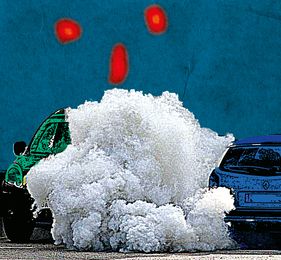The great European statesman Prince Metternich once said, “When France sneezes, Europe catches a cold.” That was when any incident or event in post-Bastille France—a street riot or setting up of a new republic, both fairly frequent—would send shivers across the royal houses of Europe.
We in Delhi had a similar saying, a literal one. We used to say, when it snows in Shimla, Delhi catches a cold.
Those were the days when Delhizens decided whether to sweat or to shiver after reading the weather column in the morning paper. Any report about snowfall in Shimla made them reach for their jackets, ties, shawls and mufflers. Talking about the weather was also a polite way of starting chats, and an artful way of attracting attention to one’s clothes.
These days, we are cruder. To break the social ice, we talk of the foul air. We no longer gauge the day in Fahrenheits and centigrades; we do it in suspended particulate matter (SPM).
We are crueller, too. Like we blamed Himachal for the cold, we blame Haryana for the stink. We say, the farmers there, who burn their autumn harvest stubble, are fouling the air.
Indeed, Delhi has a right to breathe free, but Delhizens do nothing to keep the air clean. We run more cars and scooters on our grand avenues than all the cars and scooters of Mumbai, Chennai and Kolkata put together. We emit more SPM than at least two of those metros put together. We have India’s largest and best metro network, but more of us drive to work than do New Yorkers. Our buses run empty; but our roads get clogged with cars. Courts and tribunals get our old cars lifted; we bring in more newer ones.
When the air gets foul, we blame the neighbours. We close the city gates to their trucks. We build roads—Modi opened two this year—for them to bypass our city. We set green tribunals to catch poor famers, already deep in debt, and make them pay fines. We bite the hands that feed us.
The neighbours have now started talking back. The stinking shoe is on the other foot, say Haryana Pollution Control Board members. With all the stubble smoke, they claim to have cleaner air over most of Haryana. The air gets fouler as you get closer to Delhi. It is Delhi that pollutes Haryana, and not the other way around.
And who taught the farmers bad habits? They had been harvesting with hand, which left shorter stubble that rotted easily. But machine-cutting, taught to them by Delhi’s green revolutionaries, leaves taller stubble, which does not rot before the next crop. There are machines to pluck them out, but they cost more money than all the crops can fetch.
Yet, Delhizens have been ranting and raging, and breathing fire and smoke. Arvind Kejriwal, whose empire stretches az Dilli ta Palam as that of the blinded Badshah Shah Alam, called the city a gas chamber. Congress’s Abhishek Singhvi wondered how Narendra Modi could make tall claims over Swachch Bharat when his capital is “the world’s most polluted megacity”.
Modi has kept off of it all. Wisely so. He has not said a word about Delhi’s air, but we know that he does not like Delhi’s airs. He once confided in Barack Obama that he felt like an outsider in Delhi. He seems to think that Delhi takes itself too seriously, and that it has to be put in its place. After all, his Swachch Bharat stretches az Kashmir ta Kanyakumari.
TAILPIECE: Shimla, which housed the meteorology head office from 1905, has been India’s weathercock. After the office moved to Pune in 1926, Punekars called it Shimla Office. The office moved to Delhi in 1944, but the local weather bureau in Pune is still called Shimla Office.
prasannan@theweek.in


